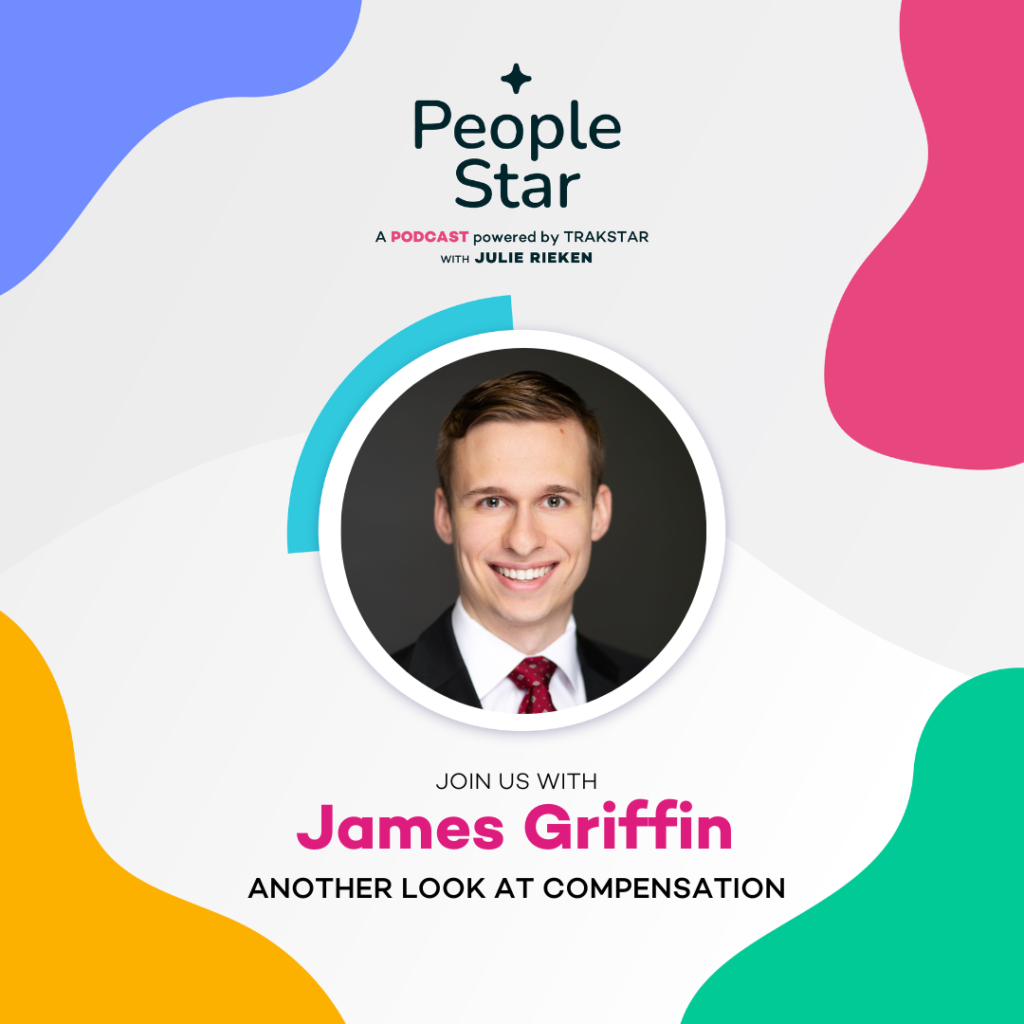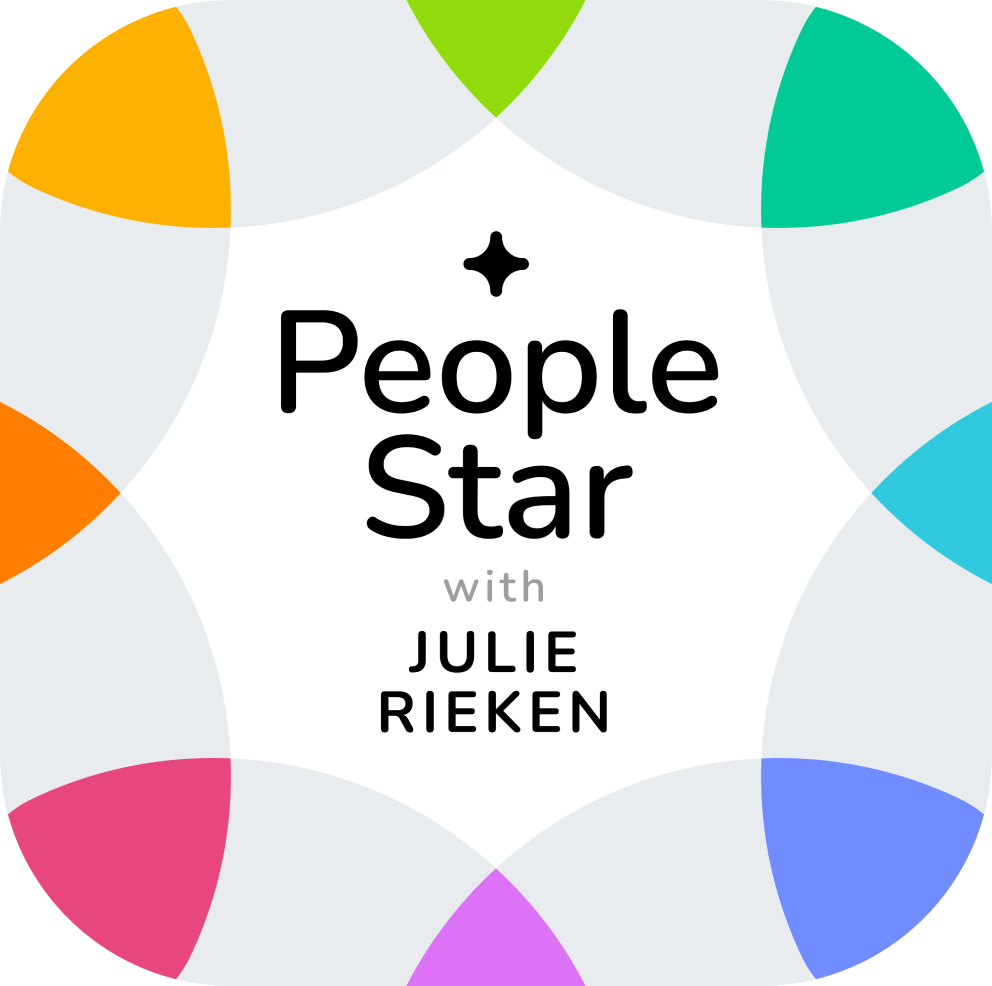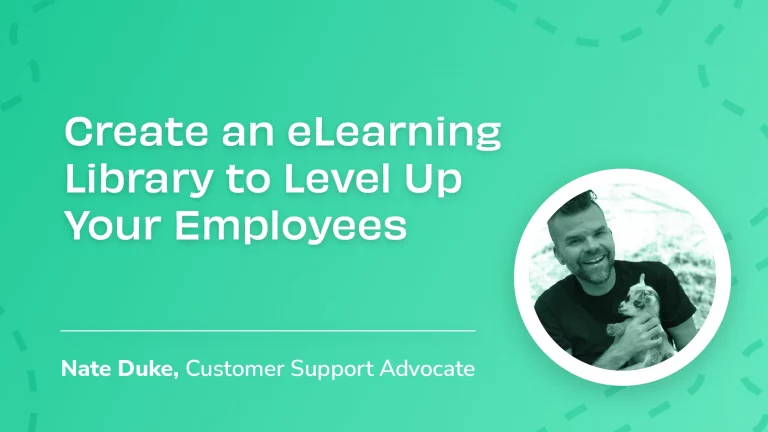
Another Look at Compensation
The PeopleStar Podcast — Season 1: Episode 38 — Posted October 19, 2022

Another Look at Compensation
The PeopleStar Podcast — Season 1: Episode 38 — Posted October 19, 2022
Share this episode!
Subscribe to PeopleStar Podcast!
Thank you for listening to PeopleStar Podcast!

Stay tuned!
The next exciting episode of PeopleStar Podcast will be released soon!
Listen & Subscribe on:
About the Episode
Let’s talk about architecture and employee compensation within a company!
Our guest in this episode is James Griffin, CEO of a fast-growing consulting firm that develops custom software for health tech companies called Invene. James starts the conversation by sharing his thoughts on compensation and the two types of models they work with. He also describes thoroughly the different actors within one of those models and how they hire people at Invene. James remarks that good-quality people are and will always be expensive, it’s on the company to know if they’ll invest in them or not.
Tune in to this incredible conversation about compensation models with an amazing young man!
Key Takeaways
1
When hiring, look for people that are not in high-cost living areas.
2
Ask yourself if your compensation model really reflects what your company believes in.
3
Many companies have applied overtime policies.
4
Sales compensation can be a nightmare, but fortunately, there are many models to use.

About James Griffin
A passionate healthcare technologist, James Griffin is a Forbes Next 1000, National OZY Genius Award Winner, and former North Texas 25 Under 25 recipient. He began university at age 16, graduating from the University of Texas at Dallas with a B.S. in Computer Science on a full-ride academic scholarship.
Founding Invene shortly afterward, his company has grown to become a leader in custom software development for rapidly growing health tech companies. Invene engages in all facets of the healthcare industry including medical devices, insurance, billing, payment processing, regulatory compliance, data security, and web/mobile applications. James is considered a subject matter expert (SME) in healthcare technology and compliance, and is regularly sought after for healthcare news commentary and interviews.
- Connect and Follow James on LinkedIn here: https://www.linkedin.com/in/jamesgriffin3/
- Know more about Invene here: https://invene.com/
Additional Resources
If you have any questions or challenges about Leadership and HR and want our opinion, please send it to support@trakstar.com with "Podcast Question" in the subject field.
Follow us on LinkedIn, Twitter, Facebook, Instagram, and Pinterest for weekly episode updates.
Listen & Subscribe on Spotify Apple Podcasts Google Podcasts
Episode Transcript
PeopleStar_James Griffin: Audio automatically transcribed by Sonix
PeopleStar_James Griffin: this mp3 audio file was automatically transcribed by Sonix with the best speech-to-text algorithms. This transcript may contain errors.
PeopleStar Intro/Outro:
Welcome to the PeopleStar Podcast. We deliver leadership perspectives from industry experts on their people, architecture, routines, and culture as they solve Hs newest challenges. And now your host, Julie Rieken.
Julie Rieken:
Hello PeopleStar listeners, it's Julie Rieken, your host. I am really fortunate today, I've got James Griffin with us. James is the CEO of Invene, a software company that provides customized solutions in healthcare. And it's really interesting. And James and I have some cool topics to talk about and share with you all today. And so I'm excited to have him here. And James, I'm just going to say hello to you and then let you give our listeners a little bit of background on who you are and about Invene. Welcome!
James Griffin:
Yeah. So my name is James Griffin. I'm the CEO of Invene, we're a consulting firm that builds custom software for fast-growing healthcare technology companies.
Julie Rieken:
Wow, that's a big hot market right now.
James Griffin:
Oh, yeah, 100%, it's growing fast.
Julie Rieken:
Cool. So welcome to PeopleStar, we, here we talk about, as our listeners know, people, architecture, routines, and culture. And you have said that architecture is of interest to you. And I love that because architecture is one we don't talk about that much. But it's critical for those of us that are building organizations like, fast-growing consulting organizations that build custom software for healthcare. So how do we structure and build those organizations? And I'm interested to get your insights on something today, and, one of the things that we talked about was compensation. And I know for a lot of HR directors thinking about compensation and how we think about our organizations and compensating the valuable people that we find in a tough workplace is something that's top of mind, and I know you've thought a lot about this. Can you just give us a little bit of an overview of your workforce and maybe some of the ways that you've thought about compensation?
James Griffin:
Yeah. So we're actually a boutique services firm, so we're about 15 full-time employees, plus our contractors that kind of go in and out depending on the contracts. So when I really think about compensation, the goal is to align people to a long-term vision. I want to be in this industry 20-plus years, I want to have long-standing employees. And what I found is that a lot of programmers jump jobs every year and that hurts clients, that hurts domain knowledge, that's not good. So one of the things we really did a lot of time in Invene, thinking about was around how do we compensate and align people in the direction? So we have two different variables of compensation for all of our employees. We've got equity and then we've got salary. First, I'll kind of talk about equity, even though we're a services firm, we decided to give each employee equity because we really wanted them to buy into the vision. Software companies traditionally have done equity, not so much on services, they don't operate on a partner model, where once you're a partner you actually get profit share. But we decided to change the mode a little. So because we're an LLC, we use something called Shadow Equity, where all of our employees get into a pool of 12%, where let's say in the exits or the IPOs or any other method of acquiring that, then our cash pool would then get distributed to the employees. Then we have an 8% for the executives and then 10% for other. So for example, in that 10%, 1% my mom has, because she told me for years she wanted a small piece of my company. So eventually I gave it to her for Christmas one day, I'm apparently her favorite son, so.
Julie Rieken:
Oh yeah, you just, you just. Yeah, you just check that box. You're on the favorite mark.
James Griffin:
Oh, 100%. So that's kind of the equity. And then when I do grants, what we did was we really designed our equity grant system. So there is a one-year cliff and four-year vest. If you're not familiar, a cliff means that if you leave before that, you don't get any equity and the in vest means it's over time. And then what's really special about our structure instead of a limited option pool, we have lots of mathematical calculations that calculate it such that it takes into account the whole pool, not just a limited number of options. So basically what happens is, let's say Invene sells for $100 million dollars and it's 12%, we then basically take all the vested shares in that 12% pool and then we calculate a cash bonus. The only downside of how we structured our equity is that when we sell, it's going to be a cash bonus, so they're going to get hit with regular income tax, not necessarily capital gains tax, but that was a really trade-off we decided to make because it was much easier to administer. And also we don't have to send out a lot of accounting documentation and it only matters upon exit. So that's, that's kind of the equity piece, which is important because we want to align people with our vision. The second piece, now let's start really diving into salary and I've kind of bucketed it into four different categories. So we've got individual contributor who may be on a project, so for example, a developer, a UX-UI designer, a project manager. Second is kind of manager who's kind of like ultimately responsible on a project. So let's say that I have seven people on a project, who is the person I'm going to go yell at? If something's not going good or something's going great, I'm giving them tutors. The third thing is an executive, how do you really incentivize your executives? And then fourth thing is really around sales and how do you incentivize individual contributors in sales? So let's first kind of talk about individual, that is a contributor, so a developer. Right now, the market is very, very tight and it gets, and people jump a lot. So it is common in organizations that your engineers only stay a year. We have great retention at Invene, but we've still had a couple of engineers jump after a year. The big problem is, is that if you hire a junior engineer directly out of college, directly out of boot camp, and the, with your organization in 6 to 12 months, they can instantly leave your job and get a 30K raise, we've had that happen to us multiple times. Even though at my organization what we do is we institute a policy that even if we hire them new, after year one, we gave them a 10K raise, after year or two we give them a 10K raise. Even with that sort of policy, we still have some slight …, we have some slight turnover on junior engineers, due to just how hot the job market is.
Julie Rieken:
Well, that's from, the markets global now. They have a lot of choice, but I applaud you for that. That's, that's a great thought on how to think about those junior engineers, cool, continue, love it.
James Griffin:
Yeah. So with junior engineers, you'll see them drop. So like if you have like 25 to 50, well, if you have like 50, 75% stay of your junior engineers, you've done actually really well because almost anything is going to happen, 25 are going, 2% are going to jump. Next, they gave me a lot of problems initially because I felt terrible. But then I was like, you know what? This is how the market really is. Another thing to notice is that when I really go out and hire engineers, I look at centers that are not high-cost of living areas. So we usually avoid California, so we kind of avoid East Coast, West Coast, we just kind of avoid it. Because what happens is I've noticed a higher percentage of my engineers getting poached if I hire them on East Coast, West Coast, because if you hire someone 45 minutes south of LA, they have so many job opportunities, it's crazy. Hire a guy in North Dakota or Idaho, yeah, they don't have much.
Julie Rieken:
You know, gosh, we're aligning on that. We've seen this, we've seen really similar trends here, yeah. Okay, interesting. So geography, location, all right. So you've talked about individual contributors and some developers. Anything else on individual contributors that you think about?
James Griffin:
Yeah. So then, I kind of think about how I structure my business. So ultimately at the end the day we're tying material shop, which means we charge people by the hour. So I think in terms of billable hours. So the goal is, is that when someone's actively on a project and let's say they're not taking vacation or it's not one of the ten holidays that we give employees, I expect them to hit 40 billable hours. And what that means is, let's say we have 2 hours of internal meetings that we meet, then that means they need to do 42 hours that week, 40 of them are billable time tracked in our tool. But what happens is that sometimes employees have to work more because there is a pressing deadline or a scope change or a variety of reasons happen. So what we do, did initially was we just made employees work overtime, and that's fine, it's common industry, but because we're a services business, we can directly correlate hours worked with revenue generated by employees. And I have a big belief in sharing some of the profit with our employees. So what we decide to do was we decided to roll out a overtime policy. So we rolled it out one project first and it was such a smashing success, we then rolled it out at all of our projects. What we did for overtime policy was that we basically took their salary. Let's say someone is making 120K, what we do is we divide it by two and then how many hours they work over that, they then get that amount. So in 120K, they would get $60 per hour. Let's say if they worked 45 hours of billable, they would get that five extra hours, are then all going to be extra billable hours. And then we also kind of include vacation or the holidays in choice, so let's say if you have Labor Day weekend, they only have to hit 32 billable hours, they're eligible for overtime that week at 32. And then what we do is every month, we pay out those overtime hours, plus the commission, plus kind of bonuses to the managers.
Julie Rieken:
Super interesting. Okay, I love that description. That's really interesting when you think about the billable hour, billable hour model and how you're working with that, great. What else, how else have you thought about compensation? What other structures do you have? You mentioned managers, executive and sales.
James Griffin:
Yeah. So manager, what we kind of really do around there is making sure that they are aligned with the team and align with the organization. So what we did at Invene was we've tried out multiple kind of structures and the best one we found so far is to do 1% of collected revenue. The reason why we don't do 1% at build revenue on the project is because sometimes the services, sadly, you may not collect all your revenue, so it's better to really align the employee with the collected revenue because then we're actually paying them on cash we've received and 1% really scales up with the team and it really incentivizes them to upsell because they're rewarded if the project goes longer, if we can get more people on the project, they're now tied into the organization, even if they're technical in nature now suddenly Invene's goal of let's make more money, it's tied to their goal of deliver the project and we kind of work together with regards to it. So everyone kind of wins there, and plus it also makes it very clear on responsibility in that they're ultimately responsible for the prospect, we want to help them win on it.
Julie Rieken:
Oh, I love that alignment. Cool. Okay, we've got two left, executives and sales.
James Griffin:
Yeah, let's, let's talk about sales. So sales is an ever evolving topic.
Julie Rieken:
Yeah. Can we just say it's ever evolving and I cannot wait to hear on this one. This one is so hard.
James Griffin:
Oh God. It's, it's a nightmare. Sales, sales compensation is a nightmare because there's so many different ways to do it, there's so many approaches, and just how you make it like tied it into your organization and how you do commission it can mean everything. So the thing is, is when I thought about commission, the kind of approach because we are our services company, we're not a product company, so our deal sizes is going to be larger. So maybe an enterprise SAS you may be settling 100,000 deal, our deal size can range anywhere from let's say 250K to a couple of million dollars. So we're on, you know, in the higher-end market premium wise. So when I really look at base versus OTE, on target earnings, I usually aim for their OTE to be twice off base. That's kind of the number I go for. So let's say, for example, that they have a a quota of 1,000,000 dollars then and, let's say that they have commission of 10%, then usually, you know, we may want their base to be 100K and then their OTE to be around 200K. So when we designed our commission plan, we really focused on forever commission because services naturally attribute. So we did not actually time limit our commission. So you close the deal and you're still with Invene, and that deal is still running seven years later, you're, we're still going to be writing you a commission check every single month because I found that I really wanted to align my sales people with my technology team and that there's always more projects to do in organizations. So I am totally fine with writing a commission check, having lower profit margin to really align the whole organization that we're upselling correctly, so that's number one. I really commission around 10% pretty easily and we pay on collective revenue not billed because as I mentioned, sometimes you don't always collect revenue.
Julie Rieken:
That's really interesting. This forever commissioned piece. Okay, what else? Keep talking about this. This is fascinating.
James Griffin:
Yeah. So with with sales, they also get equity like other regular employees and then it kind of, so a lot of our regular employees get regular salary raises, sales employees really don't, they kind of stay around the same base. But the commission obviously scales up over time with regards to it and then quotas, and then kind of how we structured our geography, we actually didn't time limit it to certain geographies or certain things like that. We have searching criteria on our target market, but because we're a smaller organization, we don't necessarily have to be like, hey, you get these couple of states, we're very national in that regard.
Julie Rieken:
That's really interesting, James. And one of the things that, and that's something we faced here, too, is what do you do with what's the right mix of total quota versus base? Do you double the base for OTE and is there a forever commission? All of these are things that I know we all wrestle with as organizations because there's no fast blueprint for how to do this. But I love the way that you've thought about it.
James Griffin:
Yeah. And like, I would take a different approach by the product company there, there's multiple different ways to do it. I would actually time limit things if I was in a product company because they're much stickier services. If you're a SAS product sign to healthcare enterprise, your, your service is never going away. But when your services, you have to fight every single month, every single quarter, every single year. So you might as well incentivize the salesperson to be along with that fight, so they're with you for the ride.
Julie Rieken:
Oh, I like that differentiation. That's a really good point. The services versus a product company. Great. How about execs? Do you have anything, anything to share on that, anything unique? The way you think about execs? I'm guessing you've got equity there for execs as well, and how do you think about that?
James Griffin:
Yeah. So executives are interesting because a lot of executives aren't billable on projects. So let's use my COO, for example. He's not billable on a project. So really, what what my vision there is, is like, how do I make sure he is tied into my vision and that we're growing fast? My COO has actually sold a couple of companies, so we had to get very creative in his compensation process because he basically got half, he basically cut his salary in half by joining Invene, because he's a very successful entrepreneur, but he really wanted to be part of the journey. So we had to make sure that it made sense initially in the beginning and then upside later on. So what we decided to do was first we looked at percentage of profit. Okay, could we give him a percentage of profit that we looked at it, that wasn't as reasonable because profit really fluctuates depending on how much we spend on marketing and advertising. This year, for example, we're going to 8-set healthcare conferences, our margins are going to be low because we're spending more time growing the business. So eventually what we did for him was we decided, hey, we're going to spend money on base salary, and then we're going to do is we're going to do a percentage of revenue. So I've committed to my COO a percentage of all revenue generated at Invene, so that way over time, he makes more and more money. The downside of that is you can look at it, you're like, oh no, what if in the future I'm paying my executive multiple millions of dollars? Who cares at that point? At a certain point, when you're making so much money, it's okay to give a percentage if they're really massive value adding, like our COO has really helped us level up incredibly as an organization and professionalize us, so that's why I was willing to give over a percentage of revenue as long as he's with the organization, even though that scales. The benefit of that though is, is I don't have to give them constant salary raises, so he's very committed to.
Julie Rieken:
And I love the way you thought about building your organization just in terms of building your talent pool with people that have experience in the kinds of things that like exits and, and acquisitions and things that that are important for where you are probably headed because that, that level of expertise is really valuable.
James Griffin:
Oh yeah, you can't trade it. And I've known for a couple of years, so he was great. But people are expensive. Let me just throw that out. Is that to get top quality people like real good executives, you're going to have to pay money. And at the time when I hired him, we could barely afford it. Now, we've …
Julie Rieken:
James, this has been a fascinating conversation about compensation. I know our HR audience is going to be interested in this, and I know this because, be traveling in HR circles, these are things we talk about. And I really appreciate your insights today. And and just helping us think about the ways that you've thought about aligning your comp in your four areas with your org, it's helpful to me and I know it's helpful to our audience. Thank you!
James Griffin:
Yeah, glad to tell.
PeopleStar Intro/Outro:
Thanks for listening to the PeopleStar Podcast. For the show notes, transcript, resources, and more ways to get a seat at the table, visit us at TrakStar.com/Podcast.
Sonix is the world’s most advanced automated transcription, translation, and subtitling platform. Fast, accurate, and affordable.
Automatically convert your mp3 files to text (txt file), Microsoft Word (docx file), and SubRip Subtitle (srt file) in minutes.
Sonix has many features that you’d love including secure transcription and file storage, automated translation, upload many different filetypes, transcribe multiple languages, and easily transcribe your Zoom meetings. Try Sonix for free today.

